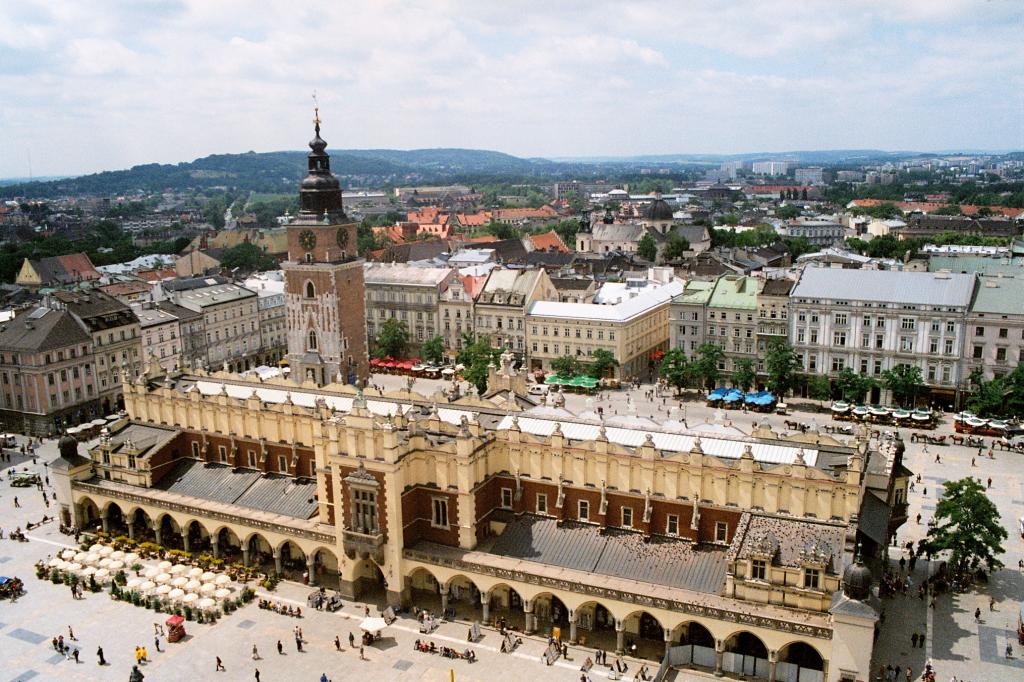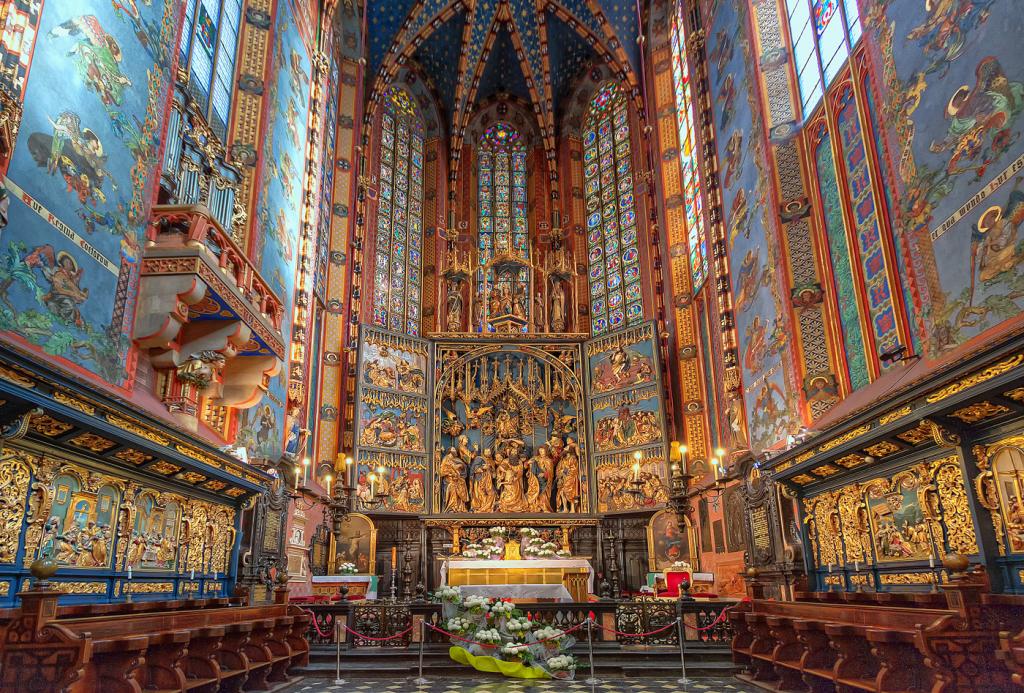A Crack at Kraków
When Kyrie first asked me if I wanted to go with her to Kraków, I was surprised. It seemed like a rather random destination, until she mentioned that Auschwitz-Birkenau was nearby. Then I understood why she wanted to go. So, being the avid traveler that I am, I enthusiastically agreed. After all, I hadn't been to Poland yet.
Little did I know, my crack at Kraków would become more emotional than I'd anticipated.

Though Kraków is Poland's second largest city (after Warsaw), it is not a very big city in terms of area, smaller even than Budapest. But it's beautiful and old and has a long history as one of Poland's most influential cities. It dates back to the 7th century, and since its establishment, Kraków has been an academic, cultural, and economic hub of Poland and Slavic Europe.
When we first arrived in Kraków, I was struck by its airport. It's tiny. It's the smallest international airport I've ever seen, and I've seen quite a few. While at most European international airports multiple planes arrive and depart each minute, I counted only four arriving planes at Kraków's international airport during the half hour that I watched. That should have been the first clue to how small and close-knit the city really is.
The airport, like many airports, is situated at the edge of the city, but in the summer, the drive between it and the city center is pretty, dominated by green fields and forests. As we entered the city proper, if I ignored the Polish signs, it almost felt like I hadn't left Budapest. The streets looked like typical Budapest streets. The trams glided past the taxi, and though most were blue not yellow (like in Budapest), they were still familiar. So I felt rather at home, despite not even being able to pronounce the Polish currency properly.
Stare Miasto
The Old Town, Kraków's historic center, is an amalgamation of the city's history, containing Gothic, Renaissance, and Baroque buildings. It is home to most of Kraków's historic treasures, including Wawel Castle, St. Mary's Basilica, and the Renaissance Cloth Hall. It's where you're sure to always find a taxi and delicious food, including, yes, pierogi, in its Main Market Square.
Wawel Castle

This Gothic castle was constructed in the 1300s for then-king Casimir III the Great, but the building that stands today more accurately stems from the 14th century, when it was rebuilt by monarchs Jogaila and Jadwiga. However, the site of the castle, Wawel Hill, has been in continuous use since the Paleolithic, about 50,000-years-ago, as a bustling trade hub.
Wawel Castle, like Poland, has a history of occupation by foreign powers. The Prussians used it as a headquarters in 1794, as well as the Austrians. Once back in Polish hands, the castle was used as a representative building and the president's home until World War II, after which it became a national museum.
Kościół Mariacki

St. Mary's Basilica is yet another Gothic building, hailing from the 13th-14th centuries. Its history is closely tied with the Mongol Invasion of the late 1200s, as not only was it destroyed then, but the trumpet signal played today at the top of the tower symbolizes the trumpeter who warned the city of the impending invasion. Sadly, he was shot in the throat for his heroism, which is why the hourly trumpet call breaks off in mid-tune.
As apparently King Casimir III was wont to do, he rebuilt the church between 1355 and 1365. And in the 18th century, the interior was completely remodeled into the Baroque style, so now only the exterior still maintains its Gothic roots. Nevertheless, it is a beautiful reminder of Kraków's rich culture and history.
Sukiennice

The Cloth Hall dates back to the Renaissance, and its historical use is self-explanatory. Merchants from all over Europe gathered in the hall to sell their wares, which extended beyond just cloth and included leather goods, spices, and lead. If you were a fashionable lady in Kraków at the time, you got your Chinese silks from the Sukiennice.
The purpose of the cloth hall is preserved today. Vendors sell traditional Polish items, ranging from folk clothing to ornate, wooden boxes (of which I purchased two). It's one of the Market Square's most recognizable landmarks, so if you're ever in Kraków, it's worth a visit!
Auschwitz-Birkenau

I'm sure all of you are familiar with the Holocaust, so I won't go into too much detail about it. But this network of concentration camps is one of the most (in)famous symbols of the Nazi terror in East-Central Europe. Located in the town of Oświęcim, about 1.5 hours west of Kraków, it originally held Polish political prisoners and captive Soviet soldiers. Only in 1942, two years after its construction/utilization, did Jews, Gypsies, and other victims of Nazi genocide arrive. It was intended as a labor camp, but with the over 1.1 million people who died there, it's safe to say that it was a death, camp, too.
Auschwitz-Birkenau is really two camps, separated by about a mile of fields. Auschwitz is the first camp, with Birkenau being constructed later to cope with the staggering number of people deported there. It is the site of gas chambers and a "medical" facility in which Josef Mengele, aptly nicknamed the Angel of Death, experimented on and murdered children, mostly Gypsy twins. I can't say I enjoyed my trip to Auschwitz-Birkenau, but it was an inescapably sobering reminder of the cruelty of humanity. And it was also rather personal, as I am 1/8 Jewish and 1/8 Gypsy, and had my maternal grandmother not been rescued from the deportation truck by her father and brothers, she would have likely ended up there, too.
References:
1. http://en.wikipedia.org/wiki/Krakow
2. http://en.wikipedia.org/wiki/Wawel_castle
3. http://en.wikipedia.org/wiki/Wawel_castle
4. http://en.wikipedia.org/wiki/Krak%C3%B3w_Cloth_Hall






